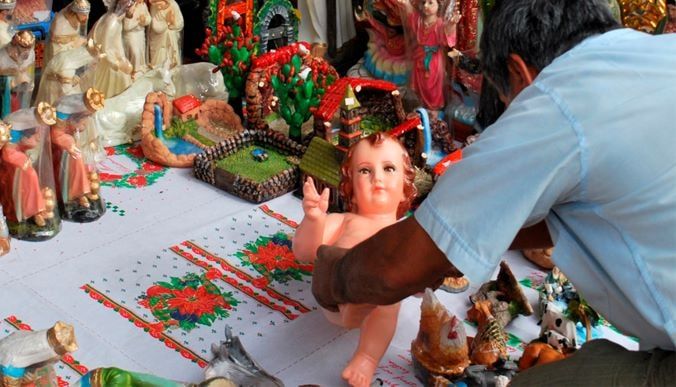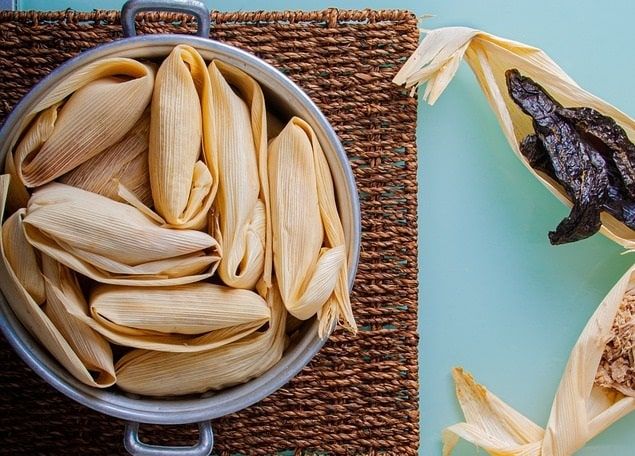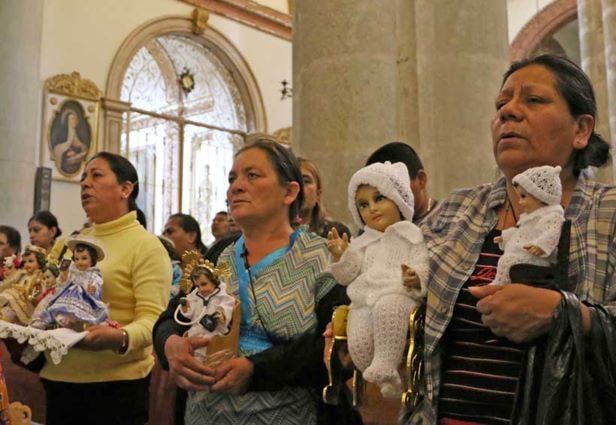What is the significance of Candlemas Day?
Candlemas Day is one of the most important popular festivities of Catholicism. The original peoples had the custom of offering tamales at the Huauhquiltamalqualitztli festivity. Candlemas Day marks the end of the Christmas cycle, which dates back to biblical times.

In Mexico and other Catholic countries, Candlemas Day is celebrated on February 2, a popular religious and cultural holiday. Mexico, also has elements of pre-Hispanic origin, due to the type of food consumed. The festivity is related to the Day of the Three Wise Men (January 6), the date on which the "rosca" is broken, and those who find inside the bread the "Godchild" must offer tamales the day they take him to be blessed.
This, according to Gisela von Wobeser, emeritus professor of the Institute of Historical Research (IIH), who assures that this is one of the most important popular festivities of Catholicism celebrated throughout Christianity, both in the East and in the Roman church of the West, and in which three great reasons converge for which this date is celebrated to this day:
The memory of the biblical passage of the presentation of the child God in the temple of Jerusalem, which occurs 40 days after his birth on December 24; the purification of the Virgin Mary after childbirth and her veneration in the invocation of the Virgin of La Candelaria.
The specialist in Colonial History explains that the word Candelaria comes from the candle, whose definition is a candle, therefore, its connotation is related to light, which in Christianity has an important symbolic meaning: "it has always been associated to heaven, to the divine. That is why in plastic art the saints are represented with a halo of light".

Nowadays, these customs have great significance in the religious aspect. In Mexico, a significant number of people practice the Catholic religion, and there are even those who, without being regular mass attendees, share religious beliefs and, therefore, attribute to the child God blessed on February 2, certain miraculous characteristics of comfort.
Many Mexican festivities have a customary ingredient and many, without being believers, share those traditional holidays such as Christmas, the Day of the Dead celebration, and, of course, the feast of La Candelaria.
The author of the book "Origins of the cult of Our Lady of Guadalupe, 1521-1688", recalls that this celebration began in the Eastern church with the name of the Encounter and spread to the West, "like many of our Catholic celebrations and cults, and merged in the 6th century with the Roman feast of the Lupercales (ancient pastoral feast that was celebrated to avoid evil spirits, purify the city, release health and fertility), where a procession with candles took place".
The invocation of the Virgin Mary as Our Lady of Candelaria arose in the Canary Islands, in Tenerife where, according to legend, in 1392, 100 years before the discovery of America, some shepherds found in the field the figure of an image -about one meter high- carrying the child God in one arm and the opposite hand a candle.
It was then identified as the Virgin of La Candelaria, who became the patron saint of the place and today is very much celebrated. With the arrival of the conquistadors and colonizers to America, the evangelizing friars implanted this devotion in many Latin American countries, where it is currently celebrated in processions with lighted candles as part of their traditions and customs.
In the name of the gods
Consuming tamales on February 2nd is an indigenous custom, as it seems it was common in certain pre-Hispanic festivities to offer food to the deities, it was believed that they would benefit from the vapors that emanated, "something similar is thought when food is placed on the altars of the Day of the Dead," says the university historian.
The native peoples had the tradition of offering them in a festivity called Huauhquiltamalqualitztli. "The Lupercales started the agricultural cycle in Rome and the same thing happened in pre-Hispanic Mexico with these tamalizas ("a kind of tamale feast") that were made as an offering to the gods," she points out.

Something that is also done in different places is to take the child God to hear mass. In some Mexican towns, particularly in the center of the country, it is customary that days before February 2 the child is dressed in new clothes to take him to the temple. In Malinalco, for example, the women take the children to church in their shawls, as if they were carrying their children and lull them to sleep during the mass. Once blessed and in their homes, they place them in a niche where they remain until December 24, when they place them in the nativity scene and pick them up on the second day of February.

This is a syncretism in which festivals as old as the Lupercal festivals of Rome, the medieval Christian festivals, and the pre-Hispanic traditions of Mexico were fused and persist to this day. In Mexico, the friars took advantage of festivities, rites, and religious customs of the indigenous people to continue them, but with new contents. That is why numerous processions involve dances because that was a way in which pre-Hispanic Mexico celebrated their gods.
More about Candlemas Festival
In Europe, the well-known Candle Festival also merged with the previous rites. This one had its origin in the Island of Tenerife, in the Canary Islands; it is said that by the XIV century some shepherds saw a wooden image in the shape of a woman, who was carrying a child on her right arm and in her left hand a candle or candle.
As was the custom then, a woman alone could not be spoken to, so they threw small stones at her, and as a result one of them had his hand paralyzed, and another one's fingers were also broken. They told this to their ruler, and he asked them to go for her, and when they touched her, both were cured. From that moment on, she began to be venerated in the cave where she was appreciated, but under the title of 'The Foreigner'.
A few years later, when Spain began its conquest of the Canary Islands, a local boy named Antón was taken prisoner, baptized, and instructed in Christianity. Sometime later upon returning to Tenerife and seeing 'The Foreigner' again, he commented to the natives that this image they worshipped was neither more nor less than the mother of God. She was called the Virgen de la Candelaria because of the candle. Even in the Christian tradition, the sense of purification also has to do with fire, that is, with light.
So her devotion in Spain was born in the Canary Islands and became popular especially among sailors who took her as an advocate and hoisted her next to the rudders, in the voyages to America. Therefore, in Mexico, it is not strange that it is in Tlacotalpan, Veracruz, where she has special roots.




